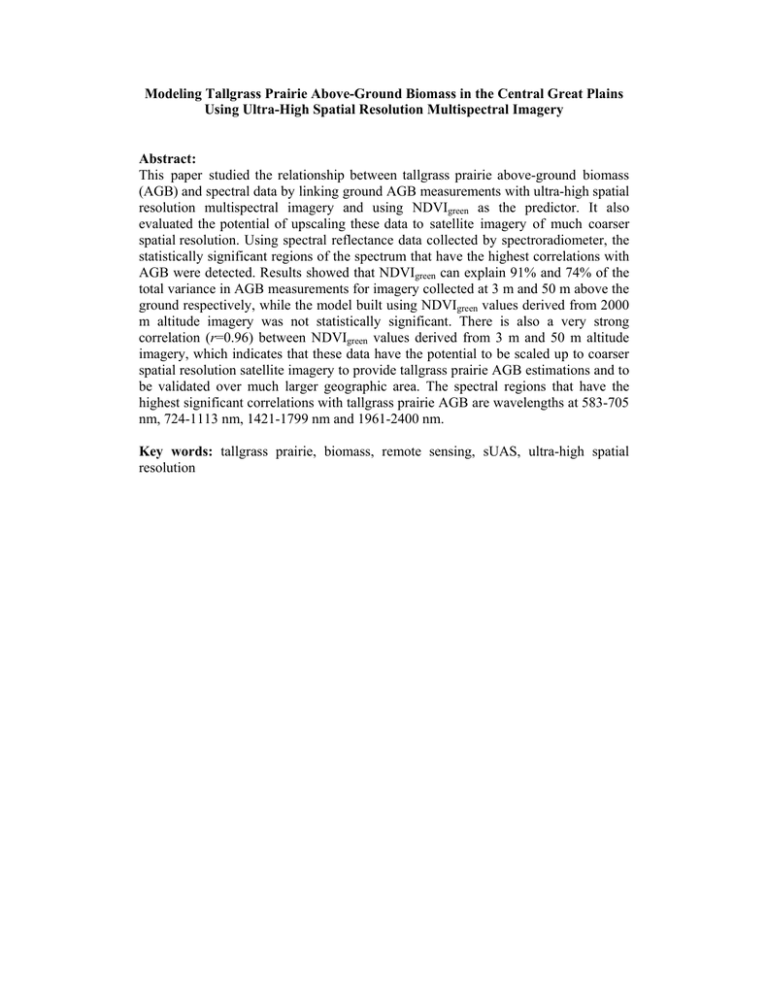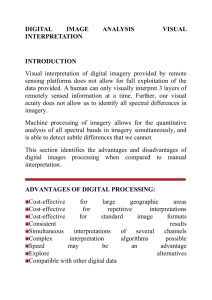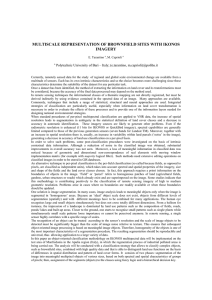Modeling Tallgrass Prairie Above-Ground Biomass in the Central Great Plains
advertisement

Modeling Tallgrass Prairie Above-Ground Biomass in the Central Great Plains Using Ultra-High Spatial Resolution Multispectral Imagery Abstract: This paper studied the relationship between tallgrass prairie above-ground biomass (AGB) and spectral data by linking ground AGB measurements with ultra-high spatial resolution multispectral imagery and using NDVIgreen as the predictor. It also evaluated the potential of upscaling these data to satellite imagery of much coarser spatial resolution. Using spectral reflectance data collected by spectroradiometer, the statistically significant regions of the spectrum that have the highest correlations with AGB were detected. Results showed that NDVIgreen can explain 91% and 74% of the total variance in AGB measurements for imagery collected at 3 m and 50 m above the ground respectively, while the model built using NDVIgreen values derived from 2000 m altitude imagery was not statistically significant. There is also a very strong correlation (r=0.96) between NDVIgreen values derived from 3 m and 50 m altitude imagery, which indicates that these data have the potential to be scaled up to coarser spatial resolution satellite imagery to provide tallgrass prairie AGB estimations and to be validated over much larger geographic area. The spectral regions that have the highest significant correlations with tallgrass prairie AGB are wavelengths at 583-705 nm, 724-1113 nm, 1421-1799 nm and 1961-2400 nm. Key words: tallgrass prairie, biomass, remote sensing, sUAS, ultra-high spatial resolution




